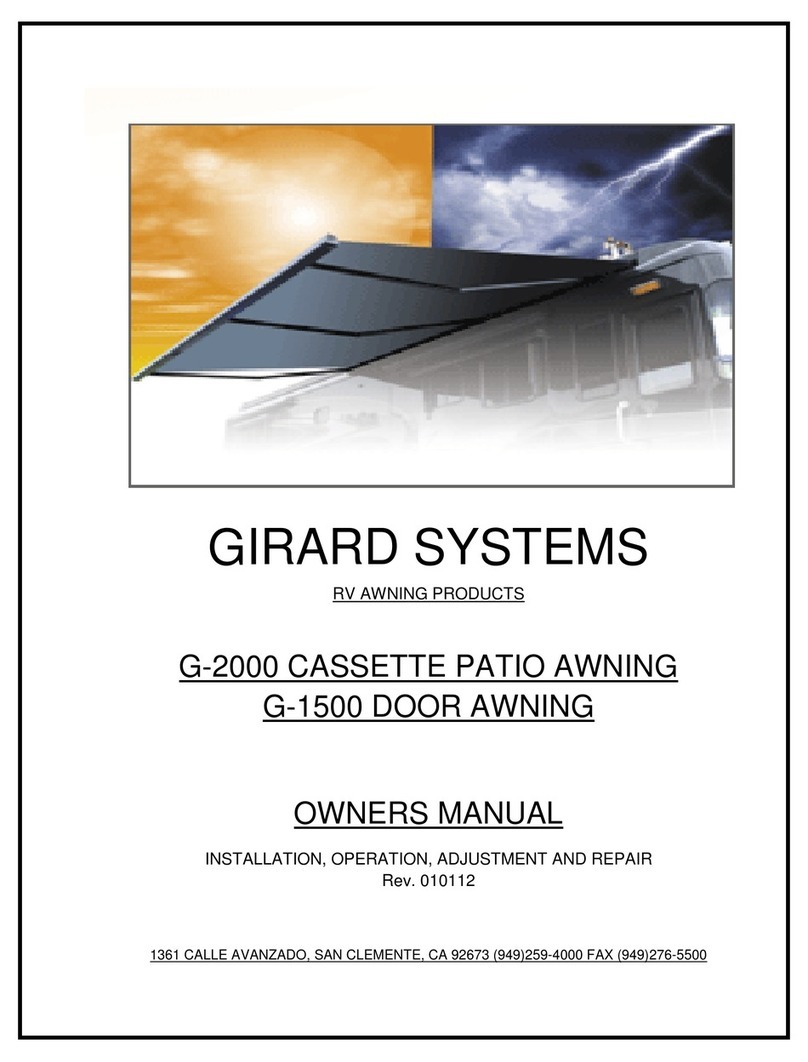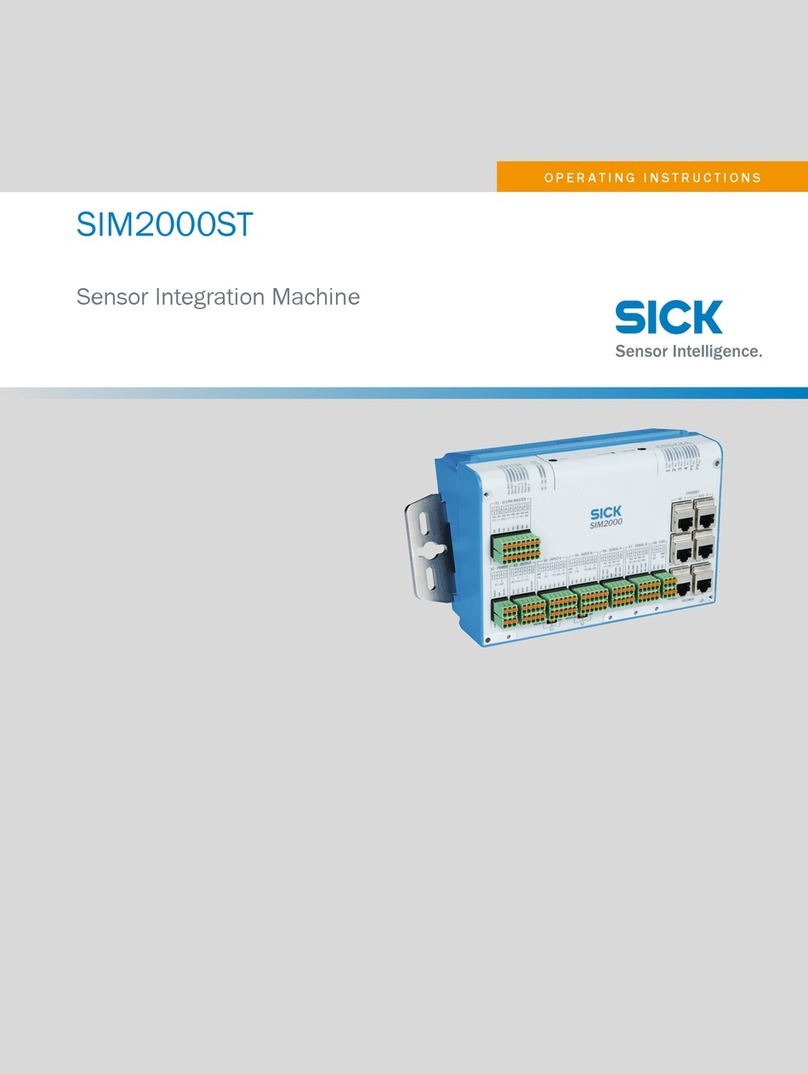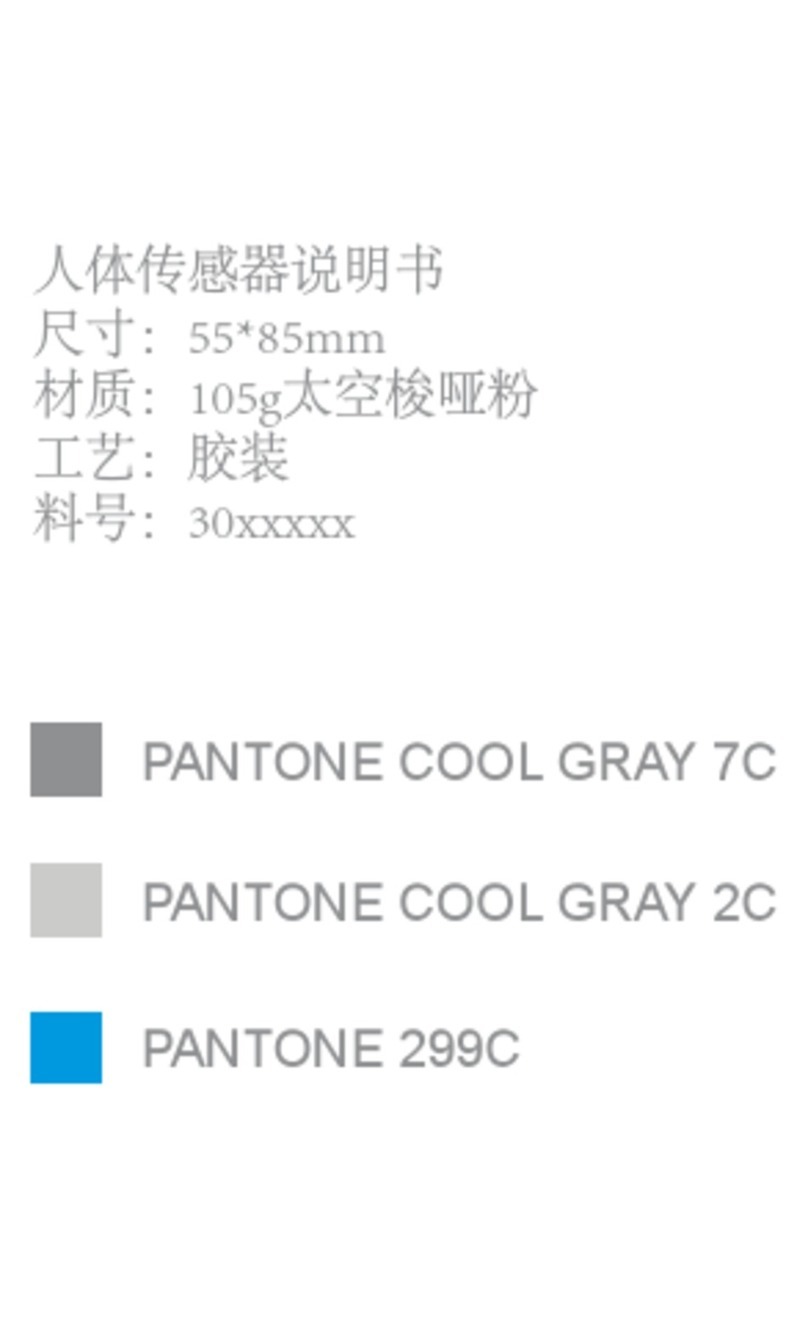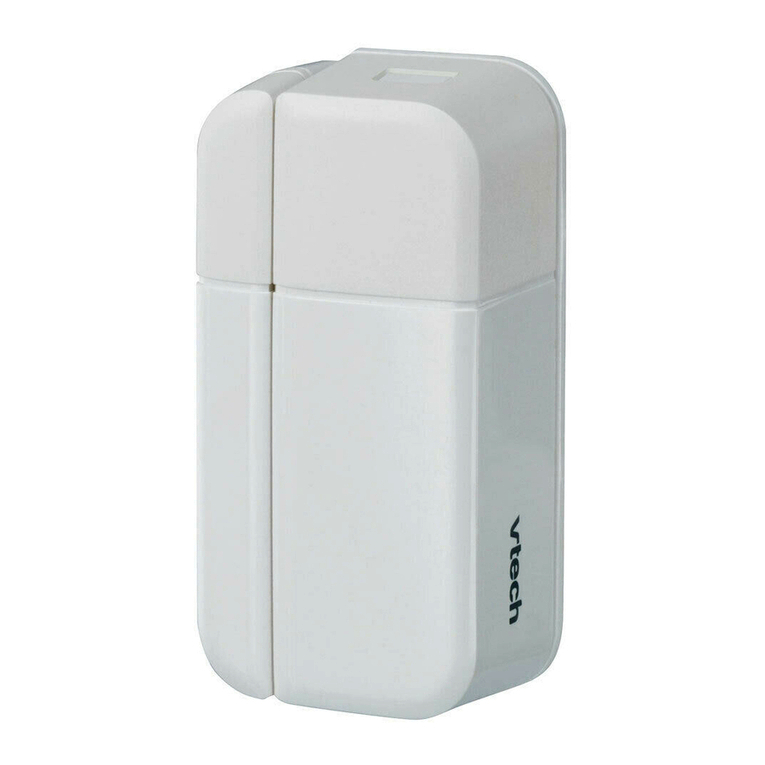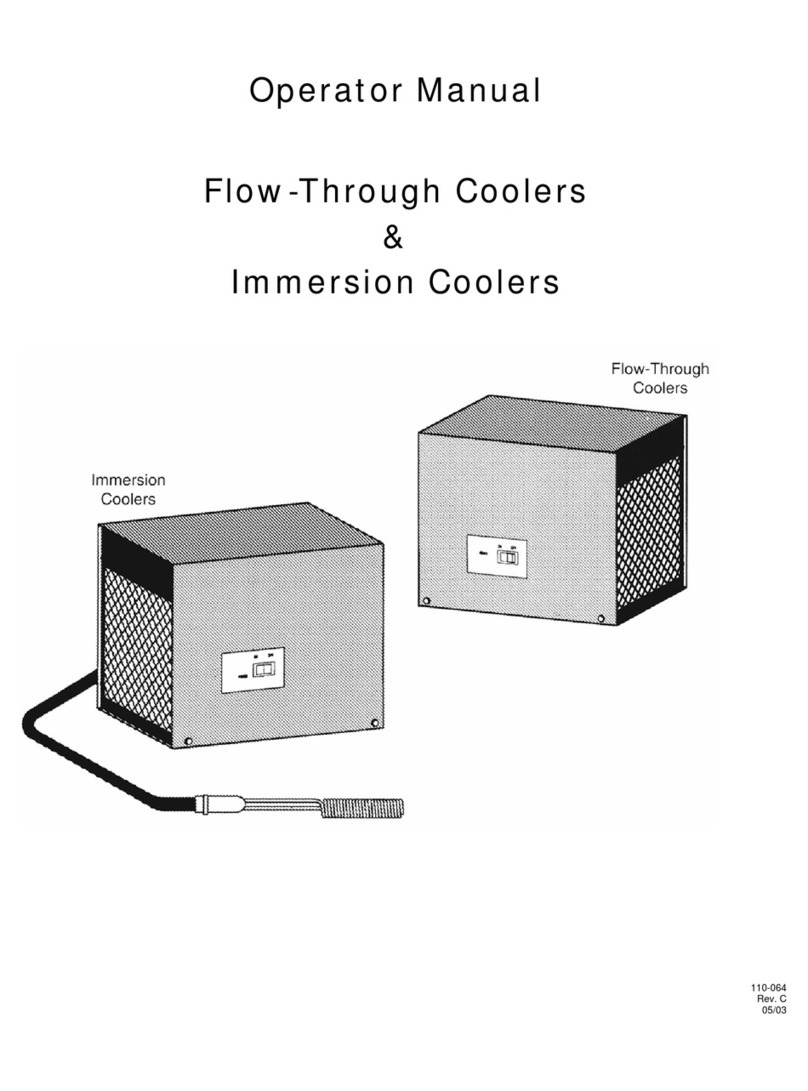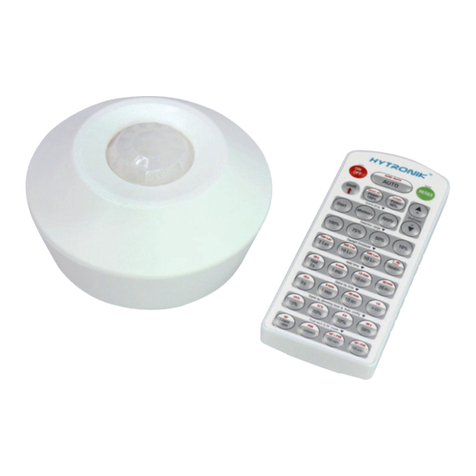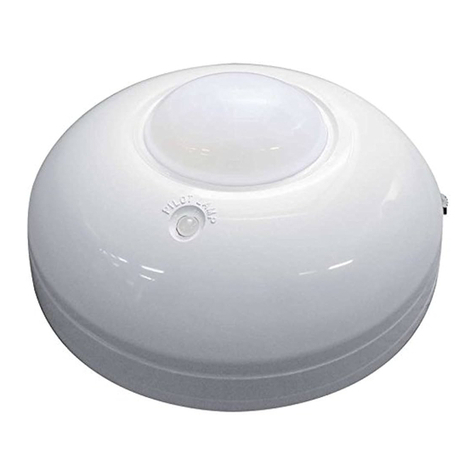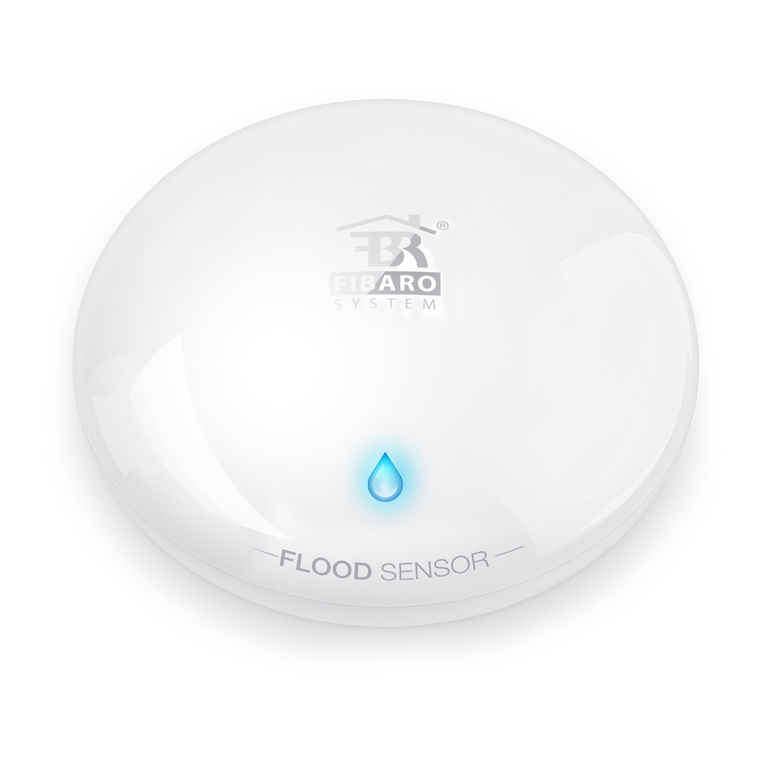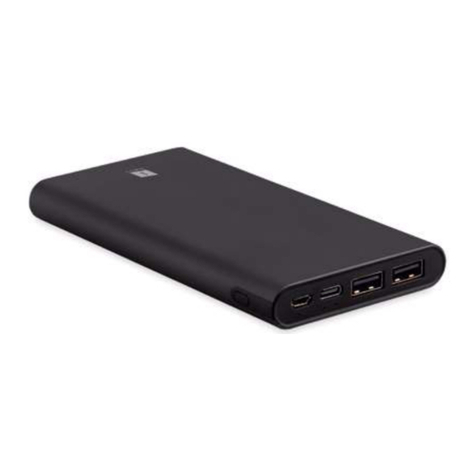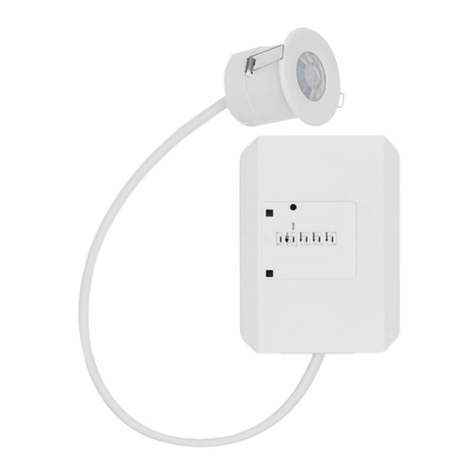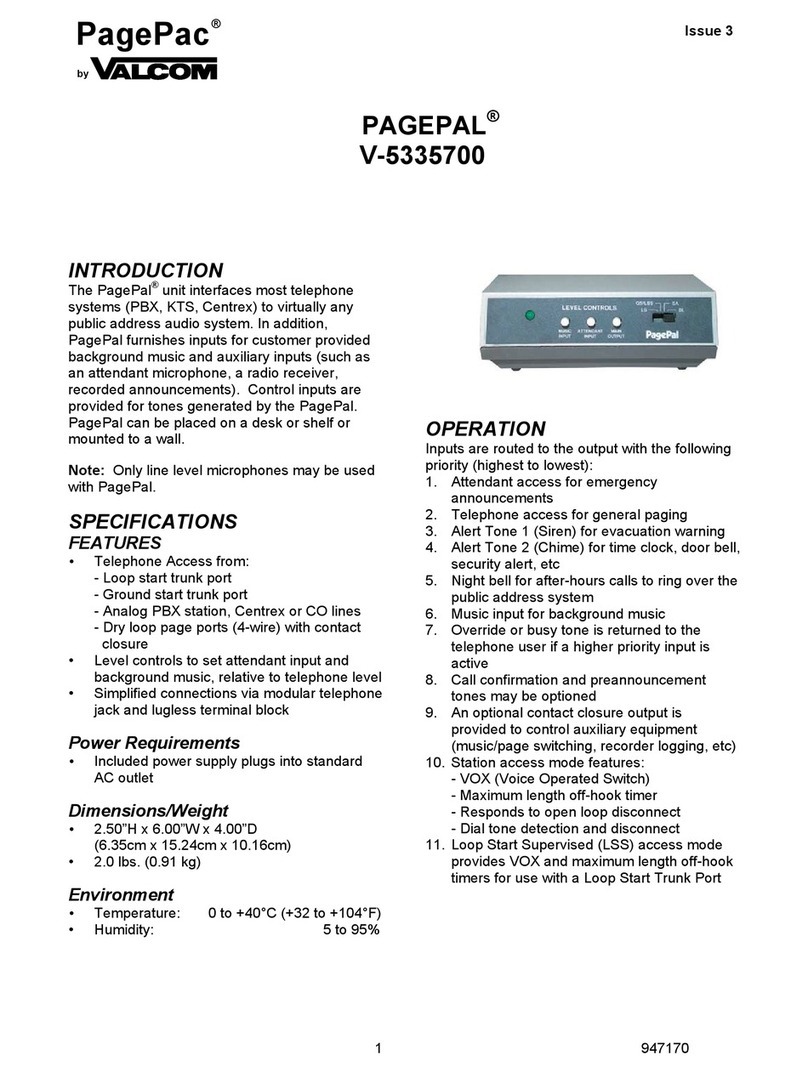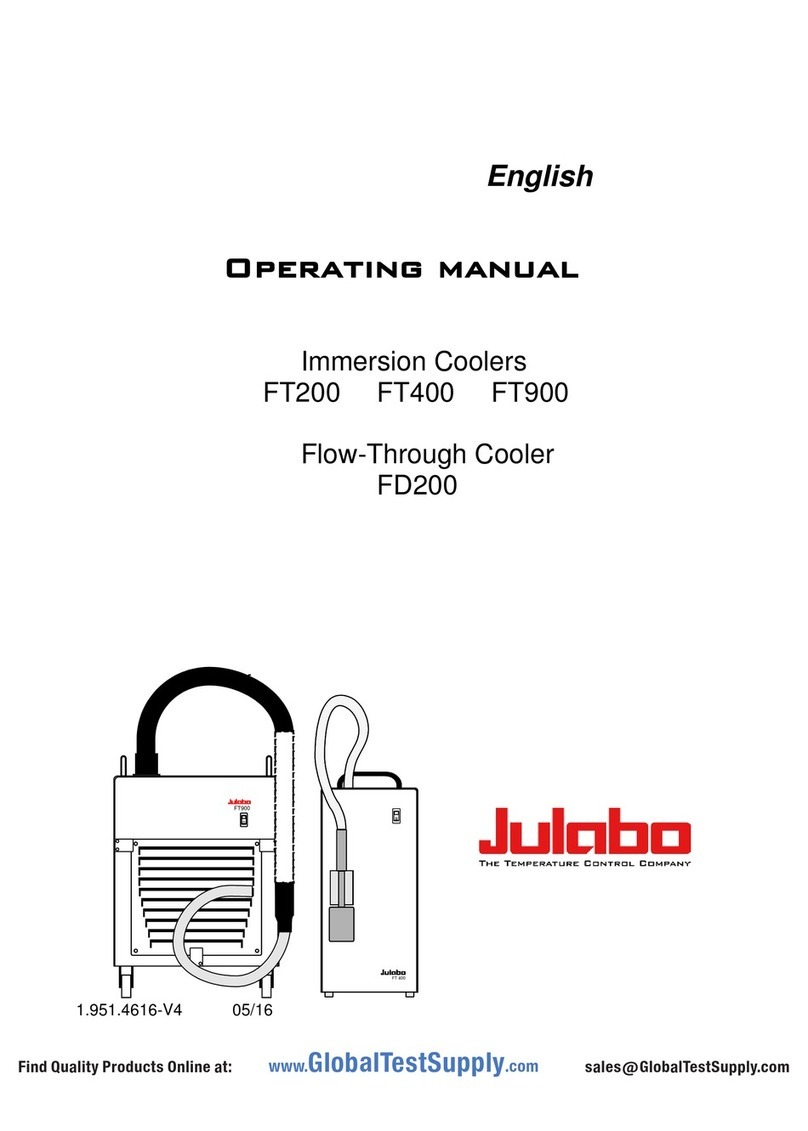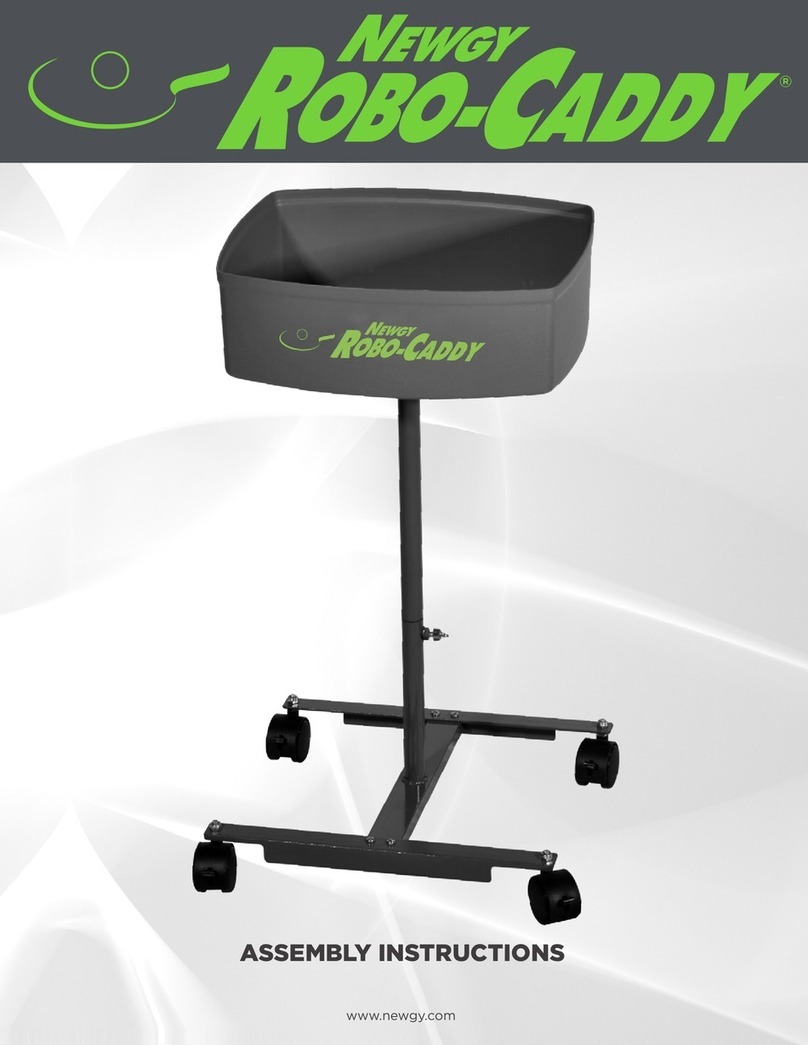Girard Products VISION Setup guide

VISION
PATIO AWNING
INSTALLATION SERVICE and REPAIR
Rev. 03052019JM
RV AWNING PRODUCTS
1361 CALLE AVANZADO, SAN CLEMENTE, CA 92673 (800) 382-8442 FAX (949)276-5500
www.girardrv.com

Page 2of 32
ALL ELECTRICAL WORK MUST BE CARRIED OUT BY QUALIFIED
PERSONNEL AND CONFORM TO APPLICABLE ELECTRICAL CODES
AND STANDARDS.
•Turn off power before beginning any electrical work.
•Please consult your RV’s wiring diagram to locate any wiring
prior to any drilling or any installation procedures.
•Ensure that placement of controls, cables, and wires are not
in any way obstructed. This can damage the components
and obstruct electrical current.
•Use only certified components.
WARNING
“To reduce the risk of electric shock the operator
power is to be provided from a weatherproof junction
box in the case of permanent wiring, as per 314.15 of
the National Electrical Code, NFPA 70.”
To prevent the motor protector from tripping do not
exceed 2 minutes of operation per hour.

Page 3of 32
Girard Systems awnings may be operated in light wind and rain
conditions. When periods of heavy rain and or high wind are
expected the awning must be closed. Never leave the Awning open
and unattended.
Damage caused by wind and rain is not covered by warranty.
All awnings must be closed prior to moving the vehicle for any reason.
As an extra safety precaution a visual check that every awning is fully
closed is required.
Damage caused by failure to comply with these instructions
is not covered by warranty.
Before using your awning, ensure that the area into which the awning
will be deployed is free of obstructions (Trees, walls, pillars, posts,
other vehicles etc.)
Damage caused by collisions with any of the above or similar
is not covered by warranty.
Before using your awning make sure that all of your electrical circuits
are operating correctly. Recreational Vehicles can generate AC power
from three separate sources. The electrical system transfer switch in
your vehicle will select power for the awning as follows:
Shore Power – if connected;
Generator Power – if the generator is running;
Inverter Power – batteries must be charged for inverter operation.
Girard Systems awnings are supplied with an electric motor appropriate to
the product.

Page 4of 32
CONTENTS
Basic System Overview ……………………………………………………………………………………………. 5
Installation Instructions …………………………………………………………………………………………… 6
Product Description …………………………………………………………………………………………………. 7
Tools Required ……………………………………………………………………………………………………….. 7
A. Unpacking ……………………………………………………………………………………………………….. 8
B. Layout and Mounting the Brackets …………………………………………………………………….. 9
Awning Bracket placement chart …………………………………………………………………………….. 10
C. Mounting the Awning ……………………………………………………………………………………… 11
D. Motion Sensor ……………………………………………………………………………………………….. 12
Testing and Adjustments ……………………………………………………………………………………….. 13
A. Adjusting Motor Limit Switches …………………………………………………………………… 13-14
B. Adjusting Pitch ………………………………………………………………………………………………. 15
C. Testing the Motion Sensor ….…………………………………………………………………………… 16
D. Adjusting the Lead Rail …………………………………………………………………………………… 16
Troubleshooting Guide ………………………………………………………………………………………. 17-19
Common Repair Procedures …………………………………………………………………………………… 20
Motor Replacement ……………………………………………………………………………………….. 20-23
Fabric Replacement ……………………………………………………………………………………….. 23-25
Arm Replacement ………………………………………………………………………………………….. 26-27
Exploded Diagram ……………………………………………………………………………………………… 28
Physical Dimensions ……………………………………………………………………………………………. 29
Component Identification ………………………………………………………………………………….. 30-32
THE G–LINK SYSTEM
The G-Link motors and control modules provided by Girard Systems communicate by
use of RF signals on a frequency of 433.92 MHZ. This eliminates the need for wiring
and the drilling of holes in the vehicle. These components must be electronically
matched, programmed or paired before use. This is usually done at the Girard Systems
factory. Should the need arise for the user to pair a device with the motor controller
they must refer to the appropriate manual for the devices applicable to their particular
installation.

Page 5of 32
BASIC SYSTEM OVERVIEW
The VISION Awning consists of three main components:
1. Mechanical system – consisting of:
•The enclosure (or cassette) protects the awning while closed.
•The roller tube which is mounted within the cassette.
•The top
cover or fabric rolled onto the roller tube and connected to the lead
rail that extends from the enclosure when the awning is opened.
•The folding arms that supports the lead rail and the fabric.
•The tubular motor which is mounted inside of the roller tube that controls the
extension and retraction of the awning.
2. Electronic controls – to power and operate the motor
•Motor Control module – GC136, GC274A, GC274B, 98GC74 depending upon the
product purchased. This works in conjunction with the other electronic controls
and the user controls included in the installation to extend and retract the
awning as required.
•Ignition retract and lock module – GC 1102 for 110v systems, GC946G for 12v
systems. This will send a retract signal to extended awnings on the vehicle, then
after 90 seconds all power is removed from the awning motors to ensure that
the awnings cannot be deployed while the vehicle is in motion.
•Motion Sensor – 98GC779, which enables automatic retraction of the awning
during periods of high wind that may damage the awning system.
3. User Controls – Hand held remote controllers and wall mounted remote
switches will differ according to the individual customer’s needs, single or multi-
channel handsets, with or without LED switching facility, and wall switches will
differ depending upon how many awnings they are required to control.
•DC104 – single channel awning remote control
•DC105A – 5 channel awning remote control.
•DC106 – 9 channel awning remote control.
•DC107 – 15 Channel awning remote control.
•98GC1063 – Single channel with LED switching facility.
•98GC1029 – 5 channel with LED switching facility.
•98GC229 – Single channel remote wall switch.
•98GC230 – Dual channel remote wall switch.
•GC661B – Multi channel remote wall switch with LED function.

Page 6of 32
INSTALLATION INSTRUCTIONS
FOR PERSONAL SAFETY AND QUALITY OF INSTALLATION, A MINIMUM OF
TWO INSTALLERS IS RECOMMENDED FOR THIS PRODUCT.
Before beginning to install the awning please verify the following;
•The vehicle is parked and leveled on suitable hard standing.
•Suitable precautions have been taken to protect the vehicle from accidental
damage.
•The area of the vehicle where the awning is to be installed has been prepared.
•Sufficient manpower, a minimum of 2 persons is required.
•Suitable protective clothing is worn by the persons doing the installation.
•Suitable and serviceable lifting and holding equipment should be used to avoid
personal injury.
•When mounting fixtures to the vehicle be aware that the soft materials that the
skin of the vehicle is made from can be torn out or “Stripped” by the over
tightening of fasteners.
DO NOT OVER TIGHTEN FIXING BOLTS AND SCREWS.
•Make every effort to ensure that fasteners are mounted to the structural
framework of the vehicle not just the skin.
•Any holes made in the skin of the vehicle must be sealed with silicone sealant,
putty tape or similar product.
WARNING
“To reduce the risk of electric shock the operator power is to be
provided from a weatherproof junction box in the case of permanent
wiring, as per 314.15 of the National Electrical Code, NFPA 70.”
To prevent the motor protector from tripping do not exceed 2
minutes of operation per hour.

Page 7of 32
PRODUCT DESCRIPTION
The VISION is a dual pitch awning system provides protection from the sun at a touch
of a button. The VISION awning is built to your specifications with the highest quality
materials available, your unit features:
•A standard motor that operates with a wireless motor controller or a
wireless motor that operates with an integrated motor control.
•Motion Sensor that will retract the awning to prevent damage from the
wind.
•A hand held Remote Control
•A wall mounted Remote Switch
•Options include; electronic automation controls to ensure proper closing at
all times, a control to retract all awnings when the vehicles’ motor is
started, and more….
TOOLS REQUIRED
•Electric Drill
•Tape measure
•(2) ladders
•Chalk line
•Flat head screwdriver (small)
•Phillips screwdriver
•Caulking gun
•(2) tubes silicone caulking
•Drill bits: 1/8”, 3/8”, and 7/16”
•Open-end wrenches: 13mm, 17mm and 19mm.
•Keyhole saw

Page 8of 32
A. UNPACKING
Before starting any of the installation procedures:
1. Unpack the awning and inspect the product for any possible damage that
may have occurred during shipping.
2. Ensure that the length and motor placement of your awning are correct.
3. When you have determined that the product is to your satisfaction, remove
the mounting brackets and place the awning in a safe location while
preparing the RV.
a. To remove the brackets locate the slide lock that retains the bracket to
the housing. (Figure 1)
b. Using a 13mm or ½” wrench, loosen all set screws on the slide locks.
c. Once the set screws have been loosened the slide locks should slide
freely, clear the slide lock away from the bracket.
4. If you have discovered any damage or missing parts please contact your
supplier.
Figure 1
SLIDE LOCK
SET SCREW
MOUNTING BRACKET

Page 9of 32
B. LAYOUT AND MOUNTING THE BRACKETS
1. MOUNTING THE AWNING – NOTE: The clearances needed for mounting
the VISION varies by manufacturer. The shape of the roof, the depth of
installation and all other factors should be taken into consideration
when installing this product. Please consult Girard Systems if there are
any questions regarding your installation.
a. Determine the exact position for the final installation of the awning.
b. Mounting brackets must be installed within 6” of the ends of the awning.
Once you have determined the location of the two end brackets snap a chalk
line between the two points to ensure alignment of the installation. You will
be able to reference this line to install the smaller middle brackets at a later
time.
c. To find the location of the smaller middle brackets please refer to the chart
on the following page. NOTE: The placement of the middle brackets
must comply with the AWNING BRACKET PLACEMENT CHART.
Failure to follow these instructions will void the warranty of this
product.
d. Now that you have determined the bracket locations, using the bracket as
your template, mark the holes for mounting the bracket.
e. Fix the brackets to the roof of the vehicle using appropriate sized bolts.
NOTE: It is up to the installer to find adequate structure to securely
fasten the mounting brackets to. All caution must be taken to
weather seal all installation perforations. Failure to do this could
result in damage to the vehicle.
NOTE: Please consult your RV’s wiring diagram to ensure that no
wiring will be damaged while drilling any holes.

Page 10 of 32

Page 11 of 32
C. MOUNTING THE AWNING
1. Lift the awning into position for fastening to the mounting brackets.
a. Ladders are usually sufficient however a scaffold or forklift may be used.
b. If using a forklift use all necessary caution to protect the surface of the
awning. Lift from the center of the awning to maintain product balance
while elevating.
2. Place the awning onto the brackets. Make sure the grooves of the awning are
securely engaged into the channels on the bracket. (Figure 3)
3. Secure the awning by moving the slide locks along the bottom awning track until
they are located under their respective brackets.
4. Once the final location of the slide locks has been achieved, tighten all set screws
on each slide lock with a 13mm or ½” wrench.
(FIGURE 3)
Shoulder Assembly
Mounting Bracket
Slide Lock
Set Screw

Page 12 of 32
D. MOTION SENSOR
NOTE: The Motion Sensor requires a hard wired 12V. D.C. connection.
12v DC MOTION SENSOR (Hard wired)
The Motion Sensor will come from the factory pre-programmed.
A hole may need to be drilled for the power cable.
1. Locate the cable at the back of the awning cassette.
2. Locate the nearest source of 12V. D.C. power.
3. If required drill an appropriate sized hole, then feed the cable into the interior
of the vehicle and connect to the 12V. D.C. source/ junction box.
4. If necessary refer to the Motion sensor manual for instructions to program
the motion sensor.
Motion Sensor

Page 13 of 32
TESTING AND ADJUSTMENTS
OVERVIEW
A. Adjusting Motor-limit switches
B. Adjusting Pitch
C. Testing the Anemometer
D. Adjusting Lead Rail
A. ADJUSTING MOTOR LIMIT SWITCHES
TOOLS REQUIRED
Black plastic key provided with awning or 4mm (5/32”) Allen wrench.
NOTE: The motor limit switches have been adjusted to the correct positions
at the factory prior to shipment. When fully retracted the awning motor is set
to stop the exact moment the awning box closes. When fully extended the
fabric should be taut and the arms should be slightly bent, exposing a gap of
about ¼” at the elbows.
Always check the motor limits after installation to ensure that the awning opens and
closes correctly. Awning fabric can stretch over time, this will require an adjustment of
the IN and/or OUT limit switch.
IMPORTANT: EXTREME CARE SHOULD BE TAKEN TO ENSURE THAT THE
MOTOR LIMIT TURNS OFF AT THE EXACT MOMENT THE AWNING BOX
CLOSES. FAILURE TO DO SO WILL CAUSE THE MOTOR TO RUN WHEN THE
AWNING IS CLOSED. THIS WILL SIGNIFICANTLY REDUCE THE LIFE OF THE
MOTOR.
1. The AC motors used in Girard Systems awnings are reversible. Any reference
made to the motor limit switches in these instructions is based on the right-hand
placement of the motor. For left hand placement, simply reverse the instructions.
2. The motor has limit settings for both OUT (extension) and IN (retraction).
3. The limit switches can be adjusted by use of the black key provided with the
awning, or you may use a 4mm (5/32”) Allen wrench.

Page 14 of 32
4. Extend the awning a few feet to gain access to the motor. Locate the motor
(standard installation is on the right hand side of the awning). The limit
adjustment pots are located on the head of the motor. Using the symbols printed
next to the adjustment screws, turn the black key (or 4mm Allen wrench) to make
the necessary adjustments. Typically, the motors are labeled with a + or a -.
(Figure 5A and 5B)
5. Approximately ¼ turn of the adjustment screw usually represents about 1”
of awning movement, but this may vary. NEVER set outward limits so that
the fabric is slack with full arm. For proper adjustment set limit switch to
stop the motor just before the arms lock. This will expose about a 1/4” gap
at the elbow.
(Figure 5A) (Figure 5B)

Page 15 of 32
B. ADJUSTING PITCH
NOTE; Adjustment of the Elbow height and pitch, will affect the height of the
awning lead rail when it is fully deployed. Ensure that when making any of
these adjustments the final height of the lead rail is no less than 7’ (84”).
This adjustment is usually required after an arm replacement. Also, if the elbow of the
arm hits the bottom of the casing as the lead rail closes.
Tools Required
•19mm (3/4”) open-end wrench
(Figure 6)
1. ADJUSTING PITCH
a. Extend the awning about 18”.
b. On the arm selected, loosen the lock nut on the side of the shoulder assembly using
a 19mm open-end wrench. (Figure 6)
c. Locate the adjustment bolt located on the front of the shoulder assembly (Figure 6).
Using a 19mm open-end wrench rotate the bolt clockwise to Raise the
pitch or counter-clockwise to Lower the pitch.
DO NOT OVERTIGHTEN AS THIS WILL RESULT IN DAMAGE TO THE
AWNING.
d. Tighten the lock nut located on the side of the shoulder assembly.
e. Close the awning completely to ensure smooth operation and that the lead rail lies
flush and square along the length of the cassette.
LOCK
ADJUST

Page 16 of 32
C. TESTING THE MOTION SENSOR
1. Partially extend the awning.
2. Physically activate the Motion sensor by pulling down the corner of the lead rail
about 12” and then release. This should create enough movement to activate the
motion sensor.
3. At this point the awning should retract; if not, check the electrical connections to
the selected power source.
NOTE: The motion sensor will only retract the awning on which it is mounted.
When testing the system verify all of the awnings will close properly from the
fully extended position.
If the system does not operate correctly under these conditions you may:
a. Provide sufficient power from your panel.
b. Try reprogramming the motion sensor.
D. ADJUSTING THE LEAD RAIL
The lead rail has been preset at +/- 3 degrees. This allows it to rest firmly into the
cassette and creates a weather resistant seal for travel. To alter the pitch angle, at each
lead rail connector loosen the lock nut with a 17mm wrench then insert a 5mm Allen
wrench into the Pitch adjustment screw. Turn clockwise to increase or counterclockwise
to decrease the pitch (Figure 8) and then tighten the lock nut.
Fig 8
PITCH ADJUSTMENT
LOCK NUT

Page 17 of 32
TROUBLESHOOTING GUIDE
PROBLEM:
The lead rail is binding on the side of the awning casing; i.e. the rail is offset from
housing.
SOLUTION:
•Open the awning about 3 feet.
•Loosen the lead rail adjustment screws on all arms.
•Locate and remove the two fabric set screws that are on each end of the lead
rail. The lead rail is now ready to be shifted.
•Retract the awning until the lead rail is about 4 inches from the fully closed
position.
•Using a rubber mallet, tap the end of the lead rail to move it into the correct
position.
•When proper alignment has been achieved tighten the lead rail adjustment
screws (Figure 9), and then replace the fabric screws. (Figure 10)
Fig.9
LEAD RAIL ADJUSTMENT

Page 18 of 32
Fig 10
PROBLEM:
The motor side of the awning closes when the awning is retracted but the opposite end
does not.
SOLUTION:
Refer to “Adjusting the Lead Rail” on page 20. If this does not solve the issue please
call the Girard Systems service line at (949)259-4000 or toll free at (800)382-8442.
PROBLEM:
Motor will not operate.
SOLUTION:
•Check that all of the GFI switches in the vehicle are turned on.
•If your vehicle has an Awnings Power Main Switch, locate that switch and make
sure it is in the ON position.
•Check that the motor’s thermal protection circuit breaker has not tripped. The
110V AC motor supplied in your VISION Awning is designed for intermittent use
and may cut out temporarily if it has overheated. When this occurs you must
FABRIC SCREW

Page 19 of 32
allow the motor to cool so that the internal circuit breaker can reset. This may
take up to an hour depending on the outside temperature. You may use a
manual crank during this period.
•If this does not solve the issue please call the Girard Systems service line at
(949)259-4000 or toll free at (800)382-8442.
PROBLEM:
The motor will operate for 10-12” and then stop.
SOLUTION:
The motor may not be receiving enough power to operate correctly.
•Check to ensure that you have a minimum of 10 amps, if not switch on your
generator or connect to shore power.
•If this does not solve the issue please call the Girard Systems service line at
(949)259-4000 or toll free at (800)382-8442.
PROBLEM:
The fabric is loose when the awning is fully extended; i.e. the roller keeps turning after
the awning arms have locked open.
SOLUTION:
The motors OUT limits must be reset to factory standards. Please refer to the
“Adjusting the Motors Limit Switches” section on page 13-14.
PROBLEM:
The motor stops before the lead rail has closed completely into the awning cassette on
either or both sides. There is no apparent binding of the awning components.
SOLUTION:
The VISION Awning is equipped with a manual override motor which has manual limit
settings. The IN limit may need to be adjusted to allow the box to be closed tighter.
Refer to the “Adjusting the Motors Limit Switches” section of this manual.
PROBLEM:
As the awning is closing, the elbow of one or more of the arms is hanging down
preventing the case from closing.
SOLUTION:
Please refer to the “Adjusting pitch” section of this manual.

Page 20 of 32
COMMON REPAIR PROCEDURES
MOTOR REPLACEMENT
NOTE: Replacement procedures vary due to motor styles, placement, factory
installation methods, and preferences of different vehicle manufacturers. These
variations primarily effect how the motors are accessed; replacement operations are
generally the same for any situation.
A. REMOVING THE OLD MOTOR
1. Fully extend the awning with the manual crank until the fabric is hanging directly
from the bottom of the roller tube.
2. Remove the right-hand awning end plate by removing the three screws that
secure it to the awning case. (Figure 11)
(Figure 11)
3. Remove the Lock plate by removal of the 4 Philips screws securing it in place.
Table of contents
Other Girard Products Accessories manuals

